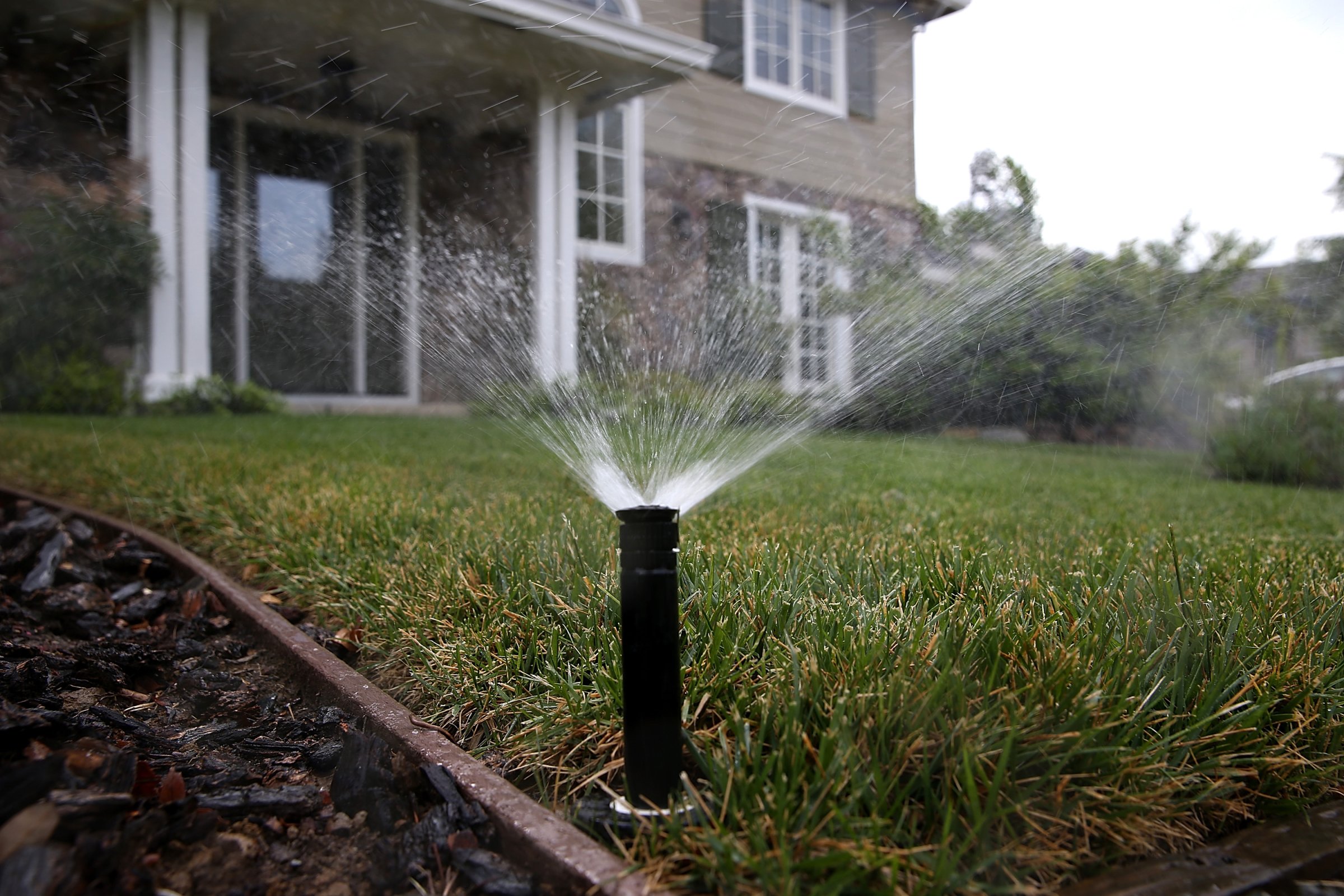
The drought in California has revealed more than just dry lake beds. As NASA issues dire warnings about the prospects for water in the state, Californians are cutting down on their showers, draining their swimming pools, and berating their neighbors for their neatly manicured lawns. Most distressing about the current crisis, though, is what it has revealed about the assumptions that underlie our environmental policies and technologies. Many believe that saving water starts at home, but in this case it’s not residential consumers but large agricultural customers who use most of the water provided by state utilities.
We like to think of individual consumers as rational economic actors, whose choices to consume (or not) affect the pricing and availability of a product through market forces like supply and demand. So deeply ingrained in us is this notion that it appears to be common sense for Governor Jerry Brown to impose restrictions on residential water customers. We are therefore currently witnessing an unprecedented interest in water and the idea that individuals matter. Remember when we used to count our carbon footprint? Now Californians count gallons of water. They’re actively discussing the benefits and drawbacks of “water-hungry” legumes, meats and vegetables online. It is already a faux-pas to serve almonds at parties.
Our environmental technologies also reflect this simplistic individualist ideal about conservation. The Nest thermostat not only manages your home heating and cooling systems, it also tells you how much energy you’ve saved and encourages you to save more. Airlines offer online carbon counters so you can offset your upcoming flight, while new cars such as Prius or Leaf allow you to drive with lower contributions to the CO2 in the atmosphere. It’s probably not long until we’ll see apps that can show you exactly how much water you are consuming.
The idea that individual consumption choices can make a difference is nice in theory. But individual efforts to “go green” pale in comparison to the effects of large-scale systems on our air quality, our water availability, or our climate. The enormous agricultural systems in California require so much water because they are busy feeding the rest of the United States and exporting food to other parts of the world. Even if 50,000 people shorten their showers, this is a drop in the proverbial bucket.
Like any infrastructural change, it is expensive to require individual citizens to opt out. It can take years for the added cost of a hybrid vehicle to make the reduced cost of a tank of gas worthwhile. Further, because companies negotiate discounted costs for their access and use, their choices to consume are sheltered from mainstream market pricing. Even when supply is limited, demand can remain high due to this price-fixing. So a market-based approach aimed just at individual consumers is doomed to failure.
To be sure, existing theories of “efficiency generation” suggest that individual consumers do matter. If thousands of customers install energy-efficient light bulbs, environmental economists equate this power savings to the investment of bringing new facilities online. Although the cost of utilities is established differently for residential consumers versus industrial ones, individual habits can and do add up.
But only if we start thinking on a larger scale. That means thinking about how existing systems influence or curtail our actions and possibilities, rethinking how our current large-scale systems intersect with people, companies, and regulatory agencies, and considering new technologies, policies, and pricing structures that can produce system-wide change.
It also means opening new technological opportunities. What if my thermostat didn’t just tell me what I am saving but also what my neighbors are saving, helping me to support and reinforce their choices? What if we expanded the “carbon offset” idea to water-needy companies to help them consume what they needed while giving back elsewhere? What if several different companies that wish to manage certain resources could band together, across distances, accessing and visualizing the data they need to evaluate their changes?
Fortunately, many of our best and brightest are already on location in California. Silicon Valley has long professed its desire to “disrupt” the system and “change the world.” Here is their chance.
More Must-Reads From TIME
- The 100 Most Influential People of 2024
- Coco Gauff Is Playing for Herself Now
- Scenes From Pro-Palestinian Encampments Across U.S. Universities
- 6 Compliments That Land Every Time
- If You're Dating Right Now , You're Brave: Column
- The AI That Could Heal a Divided Internet
- Fallout Is a Brilliant Model for the Future of Video Game Adaptations
- Want Weekly Recs on What to Watch, Read, and More? Sign Up for Worth Your Time
Contact us at letters@time.com